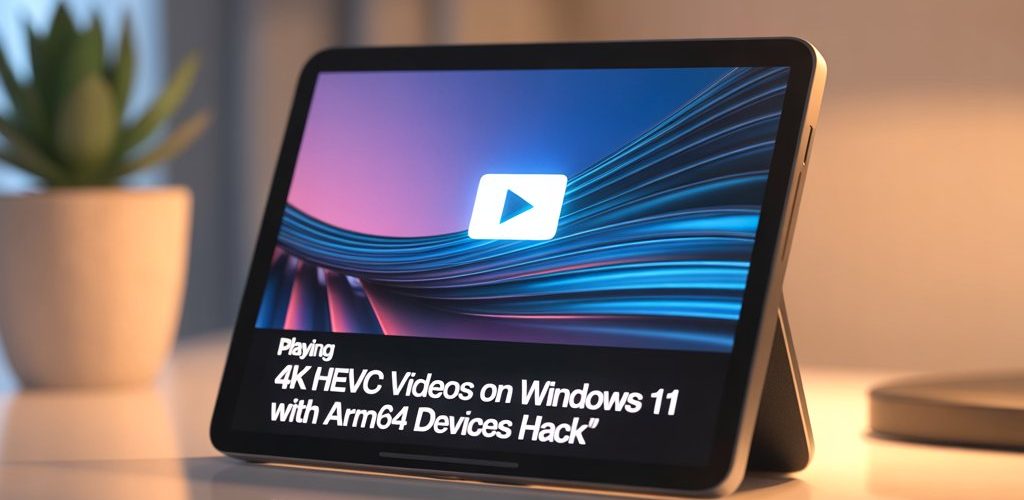As a Windows 11 user on an ARM64 architecture, particularly with devices powered by Snapdragon X-Elite, accessing high-quality media like 4K videos can sometimes be a challenge, especially when dealing with specific codecs like HEVC (High-Efficiency Video Coding). If you’ve found yourself in this situation after installing an HEVC codec from the Microsoft Store, it’s essential to grasp the underlying issues and explore some potential solutions.
First, let’s clarify what the HEVC codec entails. This codec is crucial for compressing video files; it allows for higher resolution video playback (such as 4K) without sacrificing quality. Due to its efficiency, HEVC has gained popularity, but it can present compatibility issues with varying Windows versions and device architectures.
When you installed the HEVC codec for just $1 from the Microsoft Store, you might have expected a straightforward installation that would enable your media player to handle HEVC content seamlessly. Instead, it became apparent that the process is more convoluted. Upon installation, users have reported receiving a file with a “mswindowsvideo” extension, which adds to the confusion about what exactly was installed. This is often indicative of a package that includes the codec in a manner that is less than clear.
Moreover, one of the fundamental issues arises from the fact that while the Microsoft Store mentions compatibility with Windows 10, it doesn’t explicitly confirm functionality with Windows 11, especially on ARM-based systems. This lack of clarity can lead many to question whether the codec will work optimally on the latest operating system.
If you find that traditional media players, such as Windows Media Player, are unable to handle your 4K HEVC videos, consider trying the following strategies:
- Use Compatible Media Players: While Windows Media Player may not fully support HEVC codecs on ARM64 devices, you can explore alternatives such as VLC Media Player or Potplayer. Both of these players are known for their extensive codec support and may provide a better experience in handling HEVC content.
- Install “Movies & TV”: When prompted to install the “Movies & TV” app, do so. This Microsoft app is designed to handle media playback more efficiently on Windows 11 and may automatically utilize installed codecs to provide the necessary support for HEVC media files.
- Check for System Updates: Ensure your Windows 11 system is up-to-date. Updates may include improvements or fixes that enhance compatibility with ARM64 devices and codecs.
- Verify Codec Installation: After installing the HEVC codec, you can verify if it’s active by checking the system settings. Navigate to Apps & Features and confirm whether the codec appears as installed. Sometimes, reinstalling might resolve hidden issues.
- Explore Online Forums: Engaging with communities on platforms such as Reddit or Microsoft’s forums can yield personal experiences and tips from users who have encountered similar problems. Real-user feedback can often be a valuable resource.
In conclusion, while playing 4K HEVC videos on Windows 11 with ARM64 can be tricky, exploring alternative players, making sure all necessary apps are installed, and staying updated with system enhancements can help bridge the gaps in media playback. Being proactive and resourceful is key to enjoying your 4K HEVC content.





Add comment